 To enhance service speed and avoid tariff delays, we've opened a US warehouse. All US orders ship directly from our US facility.
To enhance service speed and avoid tariff delays, we've opened a US warehouse. All US orders ship directly from our US facility.
| Cat. No. | Product Name | Field of Application | Chemical Structure |
|---|---|---|---|
| DC67342 | BRD4 degrader-1 Featured |
BRD4 Degrader-1 (Compound ML 1-50) represents a novel class of monovalent, covalent molecular glues that selectively degrade bromodomain-containing protein 4 (BRD4) through an E3 ligase-dependent mechanism. Unlike traditional bivalent PROTACs, this compound utilizes a unique covalent binding strategy to recruit the DCAF16 E3 ubiquitin ligase, inducing potent degradation of both BRD4 long (BRD4-L) and short (BRD4-S) isoforms in cellular systems.
More description
|
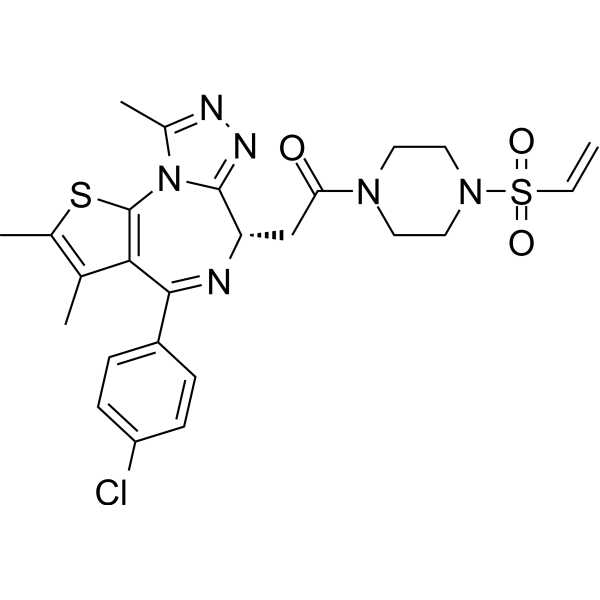
|
| DC49208 | PROTAC(H-PGDS)-7 Featured |
PROTAC(H-PGDS)-7 represents a breakthrough in targeted protein degradation, achieving unprecedented picomolar efficacy (DC50 = 17.3 pM) against hematopoietic prostaglandin D synthase (H-PGDS).
More description
|
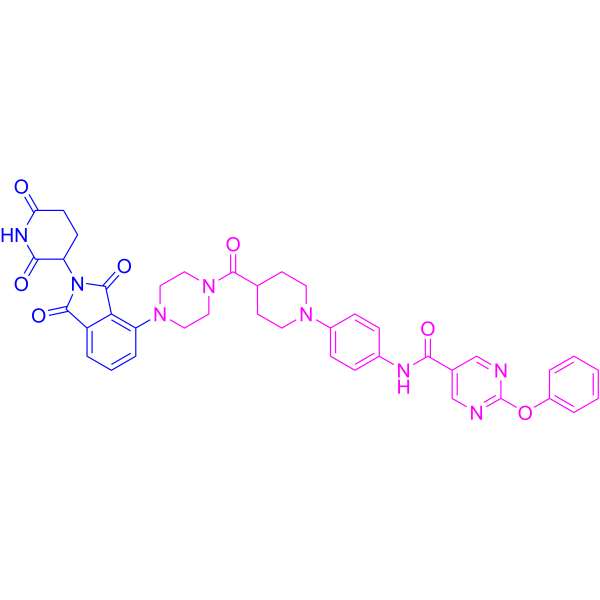
|
| DC67341 | MMH2-NR Featured |
MMH2-NR serves as an essential negative control compound for MMH2, a novel DCAF16-dependent BRD4 degrader. While MMH2 mediates targeted protein degradation by recruiting the CUL4-DCAF16 E3 ligase complex to bromodomain-containing protein 4 (BRD4), MMH2-NR is structurally analogous but lacks degradation activity, making it critical for mechanistic validation.
More description
|
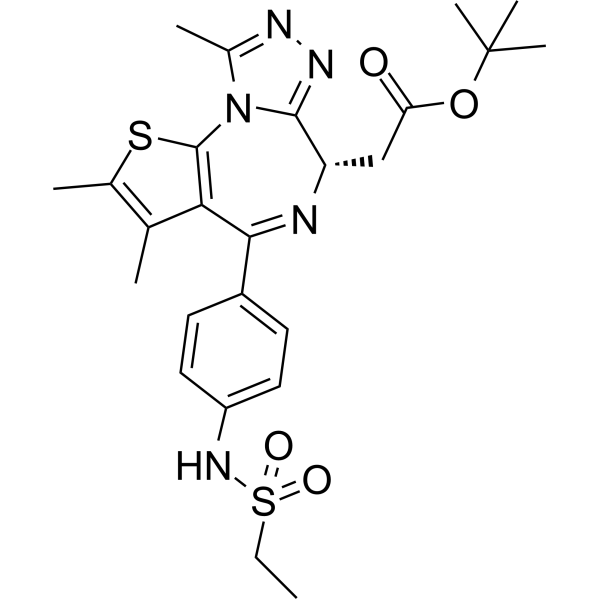
|
| DC60624 | OPB-171775 Featured |
OPB-171775 represents a breakthrough in GIST treatment as a first-in-class, non-tyrosine kinase inhibitor (non-TKI) compound that demonstrates potent antitumor activity independent of KIT mutation status. Unlike conventional TKIs that target oncogenic kinases, OPB-171775 operates through an innovative mechanism by orchestrating a protein-protein interaction between phosphodiesterase 3A (PDE3A) and Schlafen 12 (SLFN12).
More description
|
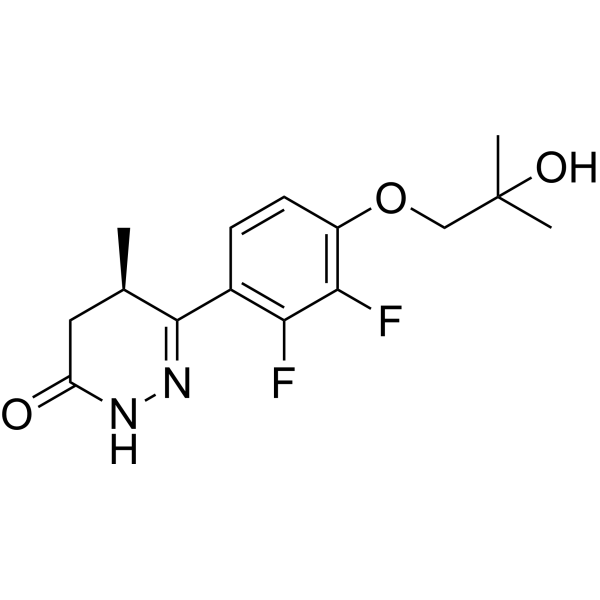
|
| DC67340 | Naphthyridine carbamate dimer Featured |
Naphthyridine Carbamate Dimer (NCD) is a synthetic DNA molecular glue engineered to induce programmable structural rearrangements in functional DNA. Unlike conventional small-molecule binders, NCD operates by non-covalently crosslinking specific DNA sequences, enforcing conformational changes that modulate DNA’s biological activity.
More description
|
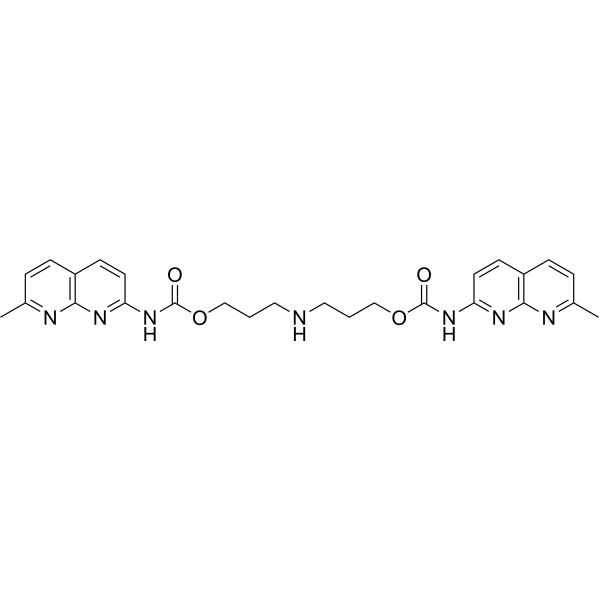
|
| DC67339 | PLX-3618 Featured |
PLX-3618 is a targeted molecular glue that induces the degradation of BRD4, a key epigenetic regulator implicated in cancer. It achieves potent BRD4 degradation (DC50 = 12.2 nM) by recruiting the E3 ubiquitin ligase adapter DCAF11, which tags BRD4 with polyubiquitin chains for proteasome-mediated destruction.
More description
|
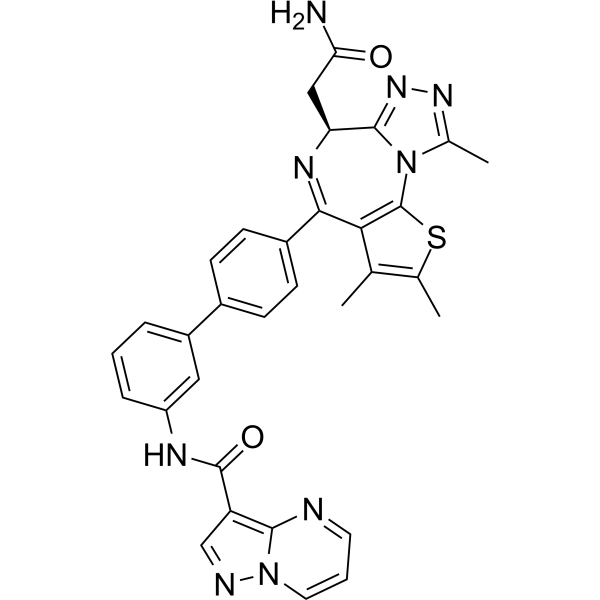
|
| DC67338 | Pan-RAS-IN-2 Featured |
Pan-rasin-2 (Compound 6A) is a novel molecular glue that selectively targets RAS, a critical oncoprotein frequently mutated in cancers. It exhibits potent anti-proliferative effects in RAS-driven cancer cell lines by disrupting oncogenic signaling.
More description
|
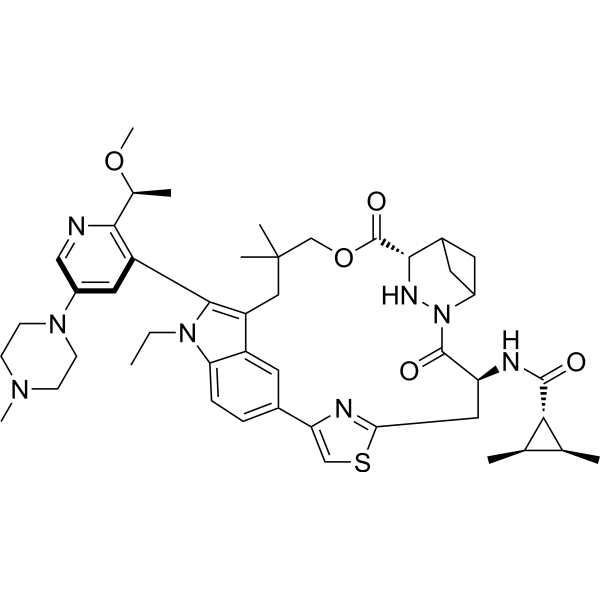
|
| DC67336 | HbF inducer 2 Featured |
HbF inducer 2 is an orally bioavailable molecular glue that selectively degrades the WIZ transcription factor (DC50 = 13 nM in human erythroid precursors) and upregulates fetal hemoglobin (HbF) expression (EC50 = 100 nM). By inducing WIZ proteolysis, it disrupts the γ-globin repressor complex, demonstrating promising pharmacokinetics in cynomolgus monkeys for potential β-hemoglobinopathy therapy.
More description
|
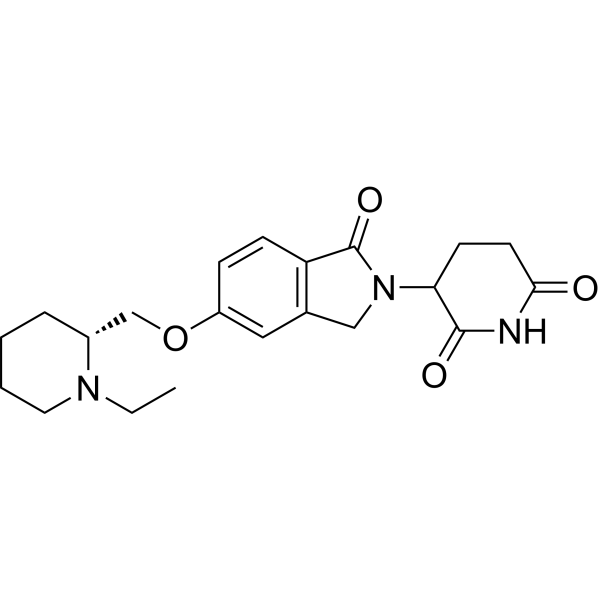
|
| DC71590 | (Rac)-CFT7455 Featured |
(Rac)-CFT7455 is a potent, racemic small-molecule degrader of the zinc finger transcription factors IKZF1 (Ikaros) and IKZF3 (Aiolos), operating through ubiquitin-proteasome-mediated degradation. It demonstrates exceptional cellular potency, with a GI50 of 0.05 nM in NCI-H929.1 cells. As the racemic form of CFT7455, it retains the same anticancer activity by selectively targeting IKZF1/3 for proteasomal destruction.
More description
|
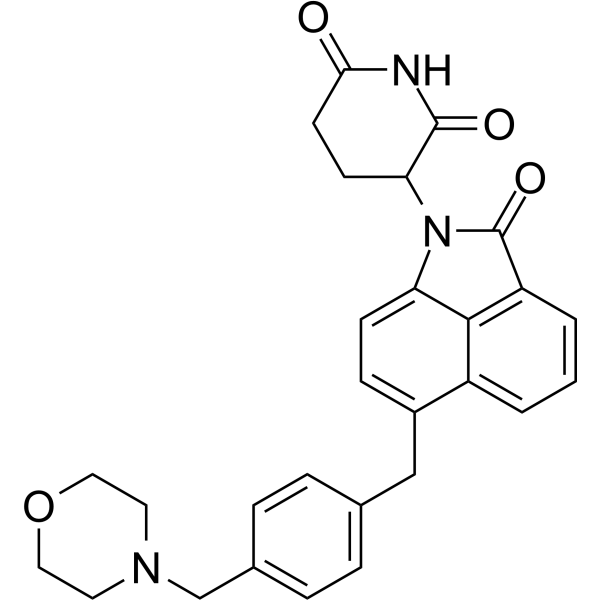
|
| DC66608 | BMS-986397 Featured |
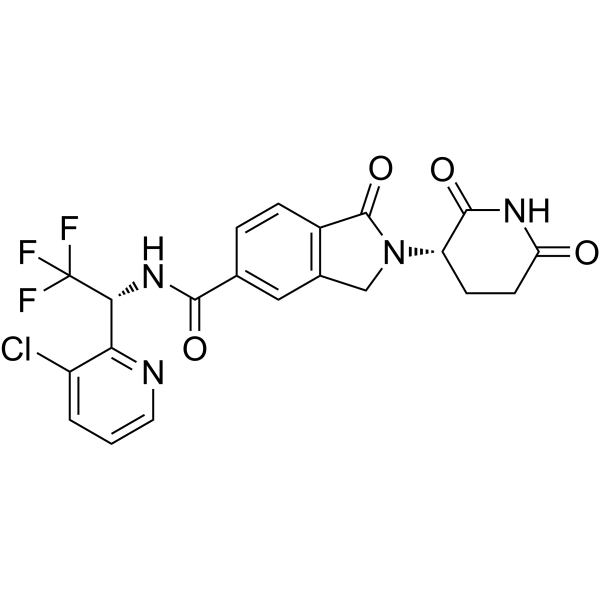
|
|
| DC67334 | Tz-Thalidomide Featured |
Tz-Thalidomide is a tetrazine-functionalized derivative of thalidomide (HY-14658) designed for targeted protein degradation applications. This bifunctional molecule serves as an E3 ligase ligand while maintaining binding affinity for BRD4, with IC50 values of 46.25 μM (BRD4-1) and 62.55 μM (BRD4-2).
More description
|
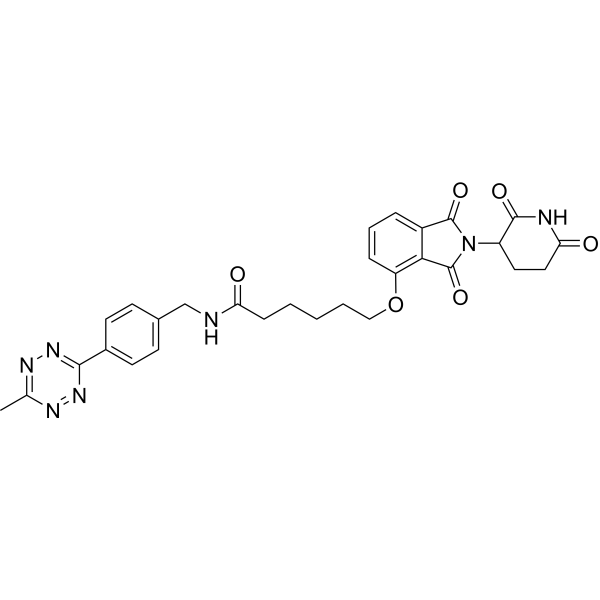
|
| DC60634 | LL-K12-18 Featured |
LL-K12-18 is a highly potent dual-site molecular glue that induces the formation of the CDK12-DDB1 complex, exhibiting an EC50 of 0.37 nM. It demonstrates 80-fold greater potency than SR-4835 in MDA-MB-231 cells and a remarkable 307-fold increase in potency (EC50 = 0.03 nM) in MDA-MB-468 cells, while its degradation efficiency (DC50 = 0.38 nM) is 50-fold enhanced.
More description
|
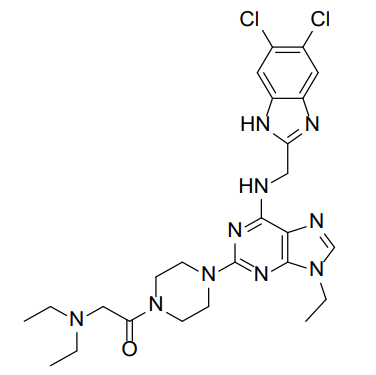
|
| DC71971 | SJPYT-195 Featured |
SJPYT-195 is a potent cytotoxic degrader of GSPT1, serving as a valuable compound for PROTAC (proteolysis-targeting chimera) synthesis and targeted protein degradation research.
More description
|
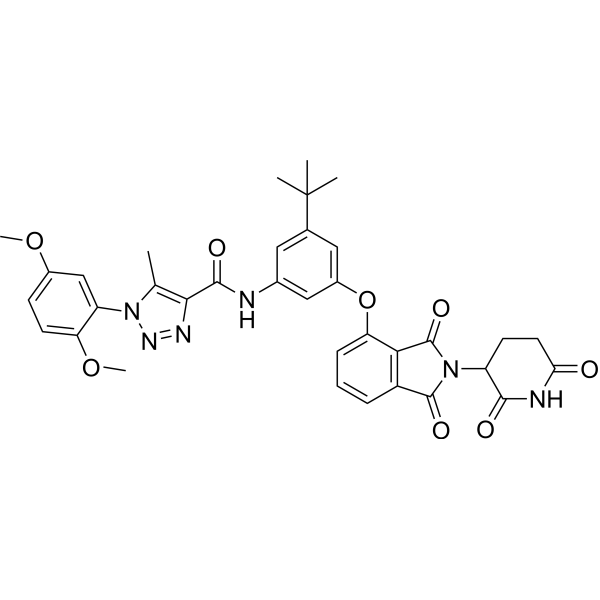
|
| DC60549 | IBG3 Featured |
IBG3 is a PROTAC-like degrader that exhibits superior degradation efficiency for BRD4 and BRD2 compared to IBG1, with DC50 values of 6.7 pM and 8.6 pM, respectively.
More description
|
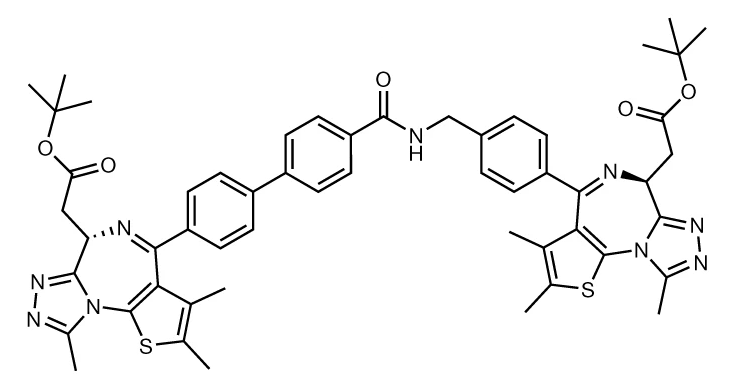
|
| DC47882 | TMX-4113 Featured |
TMX-4113 is a degrader targeting phosphodiesterase 6D (PDE6D) and casein kinase 1α (CK1α). It is a valuable tool for cancer research.
More description
|
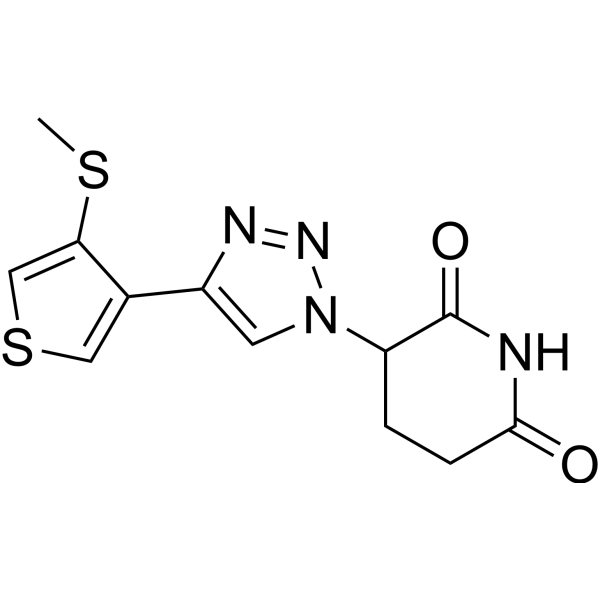
|
| DC67332 | GBD-9 Featured |
GBD-9 is a dual-mechanism degrader that effectively targets BTK and GSPT1 by recruiting the E3 ligase cereblon (CRBN). It functions both as a PROTAC molecule to degrade BTK and as a molecular glue to induce GSPT1 degradation. GBD-9 demonstrates potent inhibition of cancer cell growth.
More description
|

|
| DC74572 | DEG-77 Featured |
DEG-77 is a cereblon-dependent degrader targeting IKZF2 and casein kinase 1α (CK1α). It effectively blocks cell growth and delays leukemia progression in both murine and human acute myeloid leukemia (AML) mouse models.
More description
|
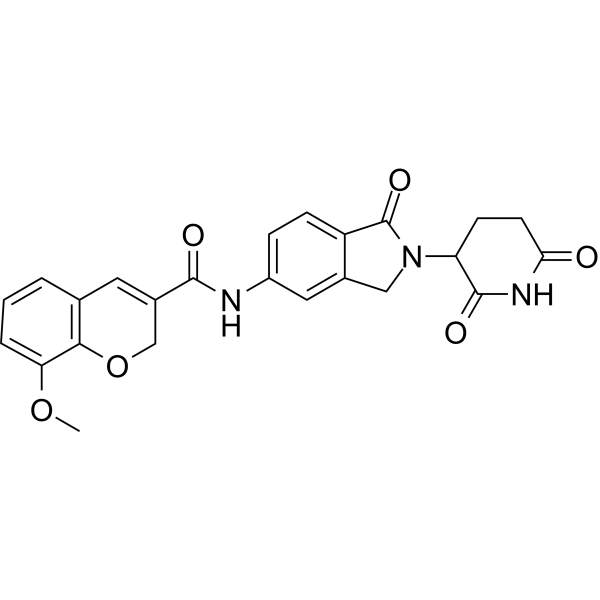
|
| DC49255 | Biotin-Thalidomide Featured |
Biotin-Thalidomide serves as a cereblon affinity probe, widely used in PROTAC and targeted protein degradation research.
More description
|
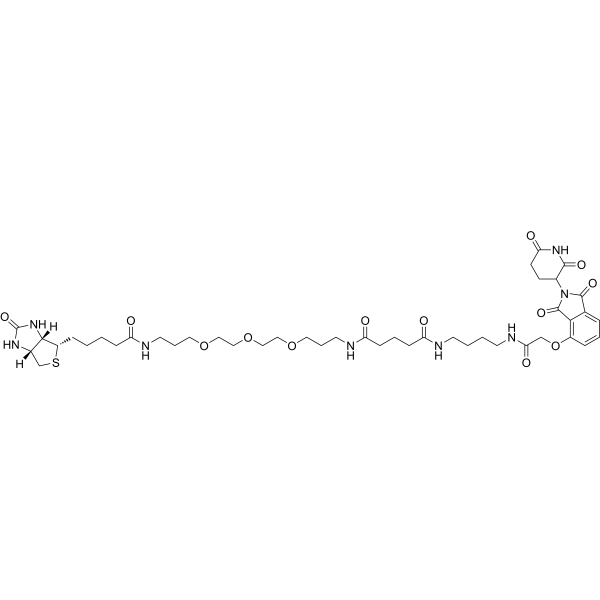
|
| DC40405 | CCT369260 Featured |
CCT369260 (compound 1) is an orally active inhibitor of B-cell lymphoma 6 (BCL6) with significant anti-tumor activity. It demonstrates an IC50 value of 520 nM.
More description
|

|
| DC28972 | (S)-Thalidomide Featured |
(S)-Thalidomide ((S)-(-)-Thalidomide) is the S-enantiomer of Thalidomide, known for its immunomodulatory, anti-inflammatory, antiangiogenic, and pro-apoptotic properties. It induces teratogenic effects through its binding to cereblon (CRBN).
More description
|
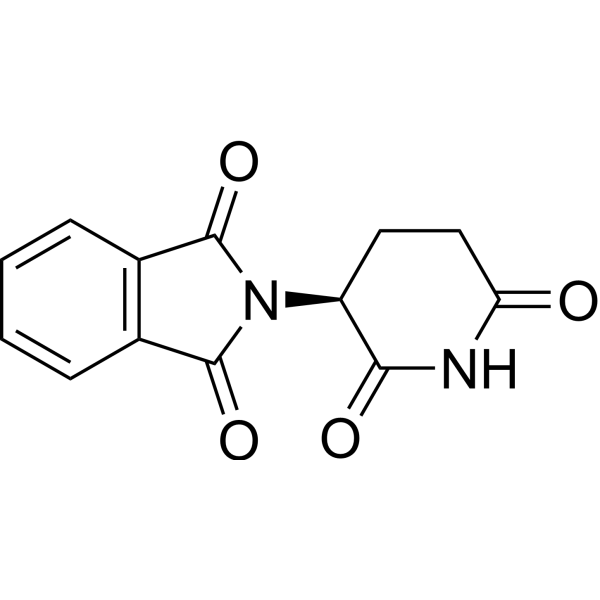
|
| DC73095 | CCT373566 Featured |
CCT373566 is a highly potent, in vivo active BCL6 degrader, demonstrating an IC50 of 2.2 nM in TR-FRET assays and a DC50 of 0.7 nM in cellular BCL6 degradation assays.
More description
|
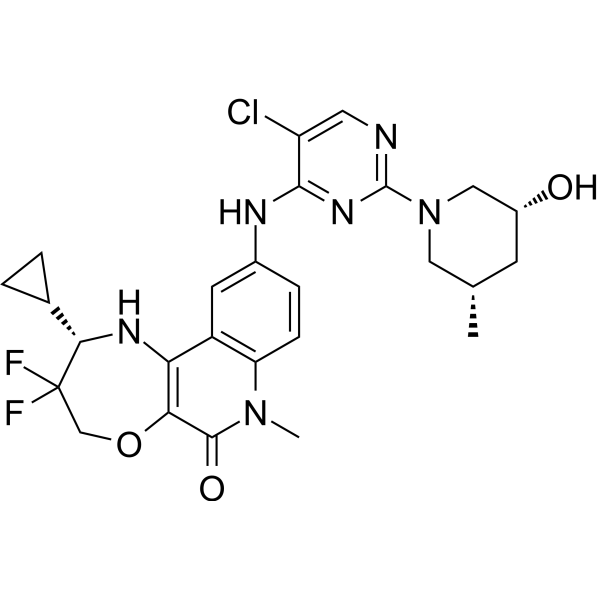
|
| DC28185 | Chloroquinoxaline sulfonamide Featured |
Chloroquinoxaline sulfonamide (Chloroquinoxaline), a structural analog of sulfaquinoxaline, acts as a topoisomerase II alpha/beta poison. It is utilized to manage coccidiosis in poultry, rabbits, sheep, and cattle, while also demonstrating antitumor activity.
More description
|
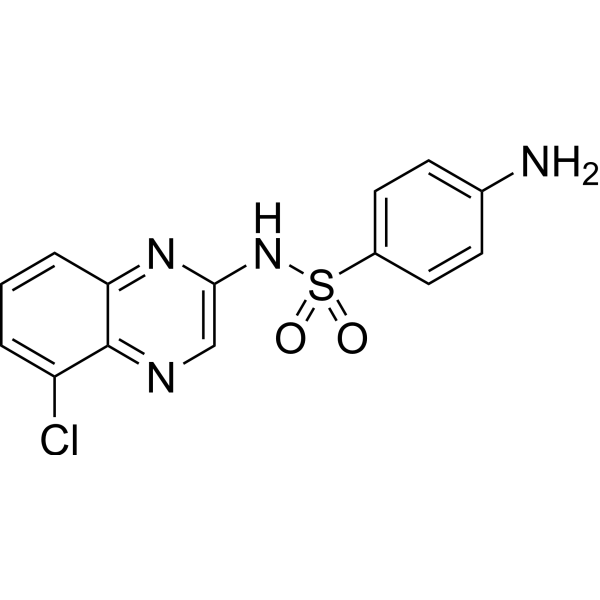
|
| DC47883 | TMX-4100 Featured |
TMX-4100 is a selective degrader of phosphodiesterase 6D (PDE6D), exhibiting high degradation efficiency with DC50 values below 200 nM in MOLT4, Jurkat, and MM.1S cells. It is a promising compound for research in multiple myeloma.
More description
|
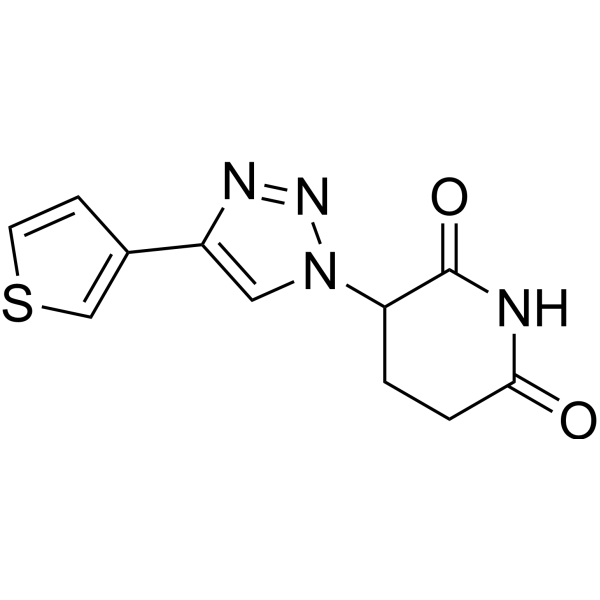
|
| DCC5670 | Zxh-1-161 Featured |
ZXH-1-161 is a potent cereblon (CRBN) modulator, demonstrating an IC50 value of 39 nM in MM1.S wild-type cells. It exhibits selective degradation activity toward GSPT1 and is a valuable tool for researching multiple myeloma.
More description
|
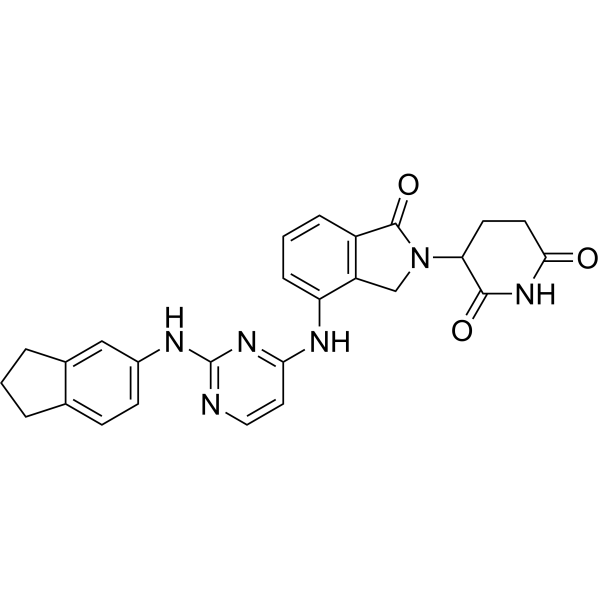
|
| DC20252 | NRX-252114 Featured |
NRX-252114 is a potent enhancer of the interaction between β-catenin and its cognate E3 ligase, SCFβ-TrCP. It significantly strengthens the binding of the pSer33/S37A β-catenin peptide to β-TrCP, exhibiting an EC50 of 6.5 nM and a Kd of 0.4 nM. NRX-252114 also induces the degradation of mutant β-catenin.
More description
|

|
| DC73176 | NCT02 Featured |
NCT02 is a small molecule that triggers the ubiquitination of cyclin K (CCNK), leading to its proteasomal degradation along with its complex partner CDK12.
More description
|
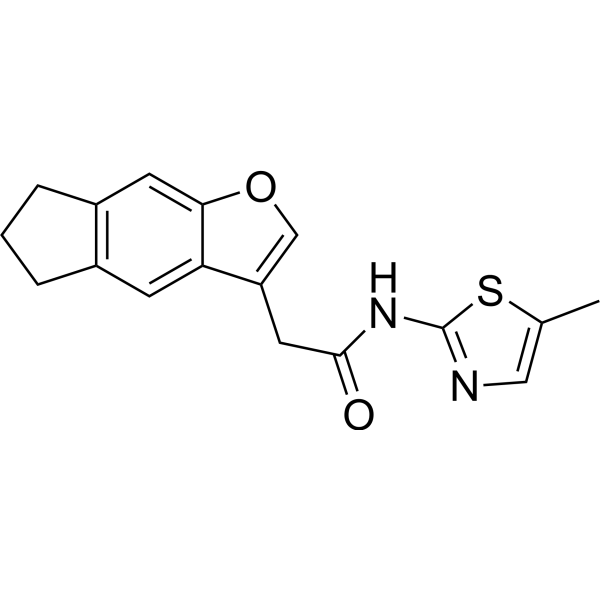
|
| DCW-009 | Schisandrin C Featured |
Schisandrin C (Schizandrin-C) is a phytochemical lignan derived from Schizandra chinensis, known for its diverse biological activities, including anticancer, anti-inflammatory, and antioxidant effects. Functioning as a molecular glue, Schisandrin C holds potential for research in cancer, Alzheimer’s disease, and liver diseases. It also induces cell apoptosis.
More description
|
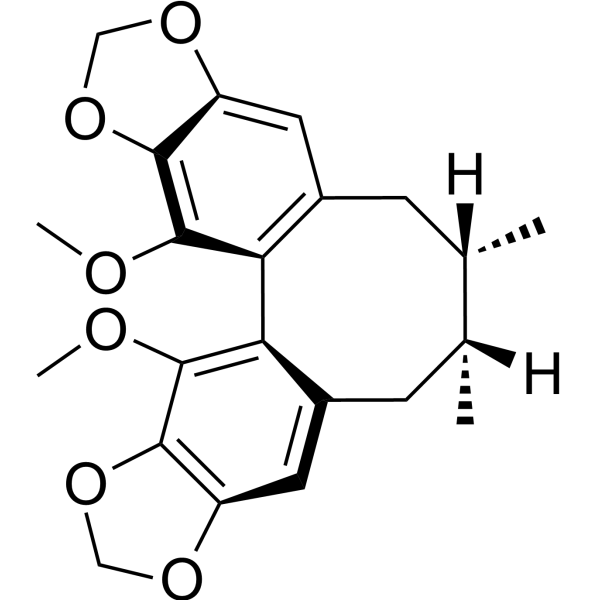
|
| DC20251 | NRX-103094 Featured |
NRX-103094 is a potent enhancer of the interaction between β-catenin and its cognate E3 ligase, SCFβ-TrCP. It significantly strengthens the binding of the pSer33/Ser37 β-catenin peptide to β-TrCP, exhibiting an EC50 of 62 nM and a Kd of 0.6 nM.
More description
|
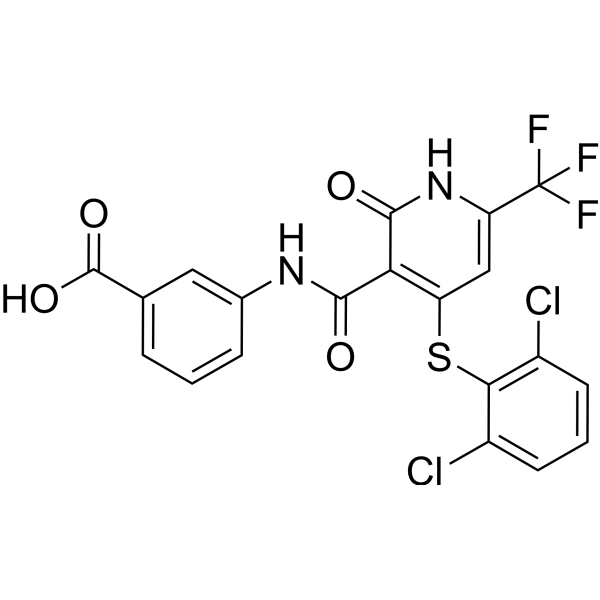
|
| DC60500 | NVS-STG2 Featured |
NVS-STG2 is a molecular glue that targets STING and activates STING-mediated immune signaling. It promotes higher-order oligomerization of human STING by binding to pockets between adjacent STING dimer transmembrane domains, effectively functioning as a molecular glue. NVS-STG2 enhances the activity of cGAMP by inducing the formation of more abundant and larger oligomers. It demonstrates significant antitumor activity in animal models.
More description
|

|
| DC7312 | Tasisulam(LY573636) Featured |
Tasisulam is an anticancer agent that triggers apoptosis through the intrinsic pathway, leading to cytochrome c release and caspase-dependent cell death. It also inhibits mitotic progression and promotes vascular normalization.
More description
|

|